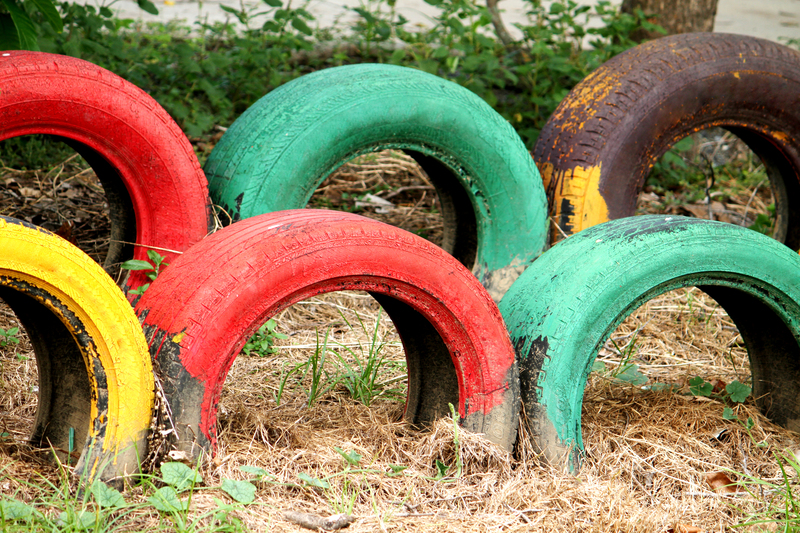Practical Ways to Save When Clearing Out Oversized Household Waste
Clearing out oversized household waste can be a daunting and often expensive task. Whether you're moving, renovating, or simply decluttering your home, dealing with bulky items like furniture, appliances, and lots of unwanted goods requires strategic planning and resourcefulness. Fortunately, there are cost-effective solutions that not only help you save money but also minimize environmental impact. In this comprehensive guide, we'll explore practical ways to save when disposing of large household items and offer actionable insights to make your clear-out experience smooth and affordable.
Understanding Oversized Household Waste
Before diving into money-saving methods, it's important to understand what oversized household waste encompasses. Large items that don't fit into standard trash bins - like mattresses, sofas, refrigerators, old cabinets, and garden furniture - are all considered oversized waste. These objects often require special handling or disposal methods due to their size, composition, or hazardous materials.
Common Types of Bulky Household Items
- Furniture: Couches, chairs, beds, tables, wardrobes, and bookcases.
- Appliances: Refrigerators, washing machines, dryers, microwaves, and ovens.
- Electronics: TVs, computers, monitors, and sound systems.
- Outdoor Items: BBQs, trampolines, garden sheds, and patio sets.
- Miscellaneous: Carpets, large toys, exercise equipment, and more.

Why Is Disposing of Bulky Waste So Expensive?
Oversized household waste disposal can come with high price tags for several reasons:
- Special equipment or vehicles are often required for transportation.
- Landfill fees and surcharges are higher for large or hazardous items.
- Many municipalities have strict regulations that limit curbside pick-up.
- Handling and dismantling appliances or electronics may require professional services.
But don't worry--there are many smart, practical ways to save money during the process!
Smart, Cost-Effective Methods for Removing Oversized Waste
1. Donate Whenever Possible
One of the most practical ways to save when clearing out oversized household waste is to donate usable items. Many charities and non-profits will collect furniture, appliances, and other large items in good condition for free - sometimes even offering a receipt for tax deductions. Examples include the Salvation Army, Habitat for Humanity ReStores, local shelters, and churches.
- Contact organizations ahead of time to confirm if they accept your type of items.
- Ensure items are clean and in reasonable working order.
- Ask about pick-up services to save on transportation costs.
Donating helps you save money, keeps waste out of landfills, and benefits your community!
2. Sell Items for Extra Cash
Don't overlook the value of your unwanted household items. Before disposing, try to sell large items through:
- Online Classifieds: Platforms like Craigslist, Facebook Marketplace, or Gumtree are ideal for local sales.
- Garage Sales: Host a neighborhood sale for furniture, appliances, or even bundles of smaller goods.
- Online Auctions: Specialized sites for antiques or vintage items (e.g., eBay, Chairish).
Tip: Clean and photograph each article well to attract more buyers. Pricing affordably ensures quicker pick-up, avoiding disposal fees and earning you extra cash!
3. Repurpose or Upcycle
Before throwing away, consider repurposing or upcycling oversize household waste. Old timber can become garden planters; an unused dresser may serve as garage storage; broken tiles could be reimagined in DIY projects.
- Search for upcycling ideas online or consult local makers' groups for inspiration.
- Refurbishing older items can even add value to your home or community spaces.
This eco-friendly approach saves you money on disposal and raw materials, while fostering creativity and sustainability!
4. Use Municipal Bulk Waste Programs
Many cities offer free or discounted curbside collection specifically for oversized household items. Take advantage of these municipal programs by:
- Checking your local government website for accepted items and pick-up schedules.
- Scheduling a pick-up or placing items curbside during designated collection days.
Tip: Some municipalities have volume limits, so split larger disposals across several pick-up dates to avoid fines or surcharges.
5. Pool Resources with Neighbors
If you and your neighbors are planning clear-outs simultaneously, consider combining loads to save on transportation or removal costs. Renting a skip bin or truck as a group can cut individual expenses dramatically.
- Coordinate with others to fill donation pickups, skips, or disposal runs to capacity.
- Share costs and minimize environmental impact by reducing the number of trips.
Pooling resources maximizes savings and builds community camaraderie!
6. Rent the Right Equipment
Sometimes, a professional removal service is unavoidable--but you can minimize costs by:
- Comparing rates from multiple rubbish removal companies.
- Renting your own truck, skip bin, or dumpster if you're able to load it yourself.
- Opting for off-peak seasons or times, when fees are lower.
Prepare your items in advance--dismantle furniture, bundle loose materials, and stack goods efficiently--to save on hourly labor fees or space charges.
7. DIY Disposal at Local Transfer Stations
Most communities have waste transfer stations or drop-off points that accept oversized items--often at a fraction of curbside collection costs. Here's how to save:
- Load your car, van, or borrowed vehicle with as much as possible in one trip.
- Sort materials (wood, metal, electronics, etc.) as required before arrival to avoid sorting fees.
- Inquire about discounts for residents or special free disposal events.
DIY drop-off is more effort, but ideal for budget-conscious households!
8. Check for Manufacturer Take-Back Programs
Modern regulations require some manufacturers to take back their products for responsible recycling, especially electronics and mattresses. Before disposing of these items, research whether a free manufacturer take-back program is available in your area.
- Major brands and retailers often run collection or buy-back schemes.
- Some companies offer pick-up or store drop-off for large electronics or appliances.
Using these programs ensures proper recycling and can mean zero disposal cost for you.
How to Prepare Oversized Waste for Cost-Effective Disposal
Proper Sorting Saves Money
Organize oversized household items by type--wood, metal, electronics, and general waste. This allows for easy identification of recyclable or donatable items and faster processing by removal crews or stations. Many disposal facilities charge less if items are pre-sorted.
- Separate hazardous materials (like refrigeration units or batteries), as these carry special handling fees.
- Remove doors, cords, or recyclables to minimize disposal charges and enhance safety.
Dismantle and Compact Items
Oversized goods take up less space--and therefore cost less to transport or dispose of--when they're broken down. Take apart bed frames, remove legs from tables, and roll up carpets tightly. Bulky sofas can sometimes be reduced to smaller, manageable components.
Bundle and Label
If required by your municipality or service provider, bundle wood, metal, or textiles and clearly label hazardous items. Following local guidelines can mean the difference between free collection and costly rejected loads!
Tips to Avoid Common Oversized Waste Disposal Pitfalls
- Don't wait until the last minute--early planning allows you to find the cheapest or free disposal routes.
- Avoid illegal dumping--hefty fines far outweigh any savings. Always use reputable providers.
- Be wary of "man with a van" ads that don't have proper waste disposal licenses.
- Research local regulations; some areas require permits for skip bins or have time restrictions on curbside disposal.
- Refrain from mixing hazardous and regular items, which triggers extra charges or outright rejection.
Eco-Friendly Disposal: Save Money and the Environment
Sustainability and savings can go hand-in-hand! Here are ways to clear oversized household waste while being kind to the planet:
Recycle Where Possible
- Appliances, electronics, and metals are widely recyclable and often accepted at specialized facilities for little to no cost.
- Local councils sometimes offer free e-waste or metal collection days--watch for announcements.
- Scrap metal dealers may even pay you for valuable materials like copper or aluminum!
Compost the Green Waste
- Remove organic garden waste for composting, either in your own bin or through municipal green programs.
- This reduces disposal volume and creates free fertilizer for your garden!
Think Before You Buy
The best way to save on clearing oversized waste is to avoid accumulating unnecessary items in the first place. Opt for quality over quantity, and be mindful of future disposal needs when making large purchases.

Key Takeaways: Saving on Oversized Household Waste Disposal
- Donate, sell, or repurpose before resorting to landfill.
- Take advantage of municipal bulk waste, manufacturer take-back programs, and local recycling.
- Combine disposal with neighbors or family for volume discounts.
- Do-it-yourself drop-offs are often more affordable, especially when items are sorted and dismantled.
- Always comply with regulations for safe, cost-effective waste removal.
Conclusion
Clearing out oversized household waste doesn't have to strain your wallet or the environment. By following these practical, money-saving strategies, you'll not only reduce bulky waste removal costs but also contribute positively to your community and the planet. Remember: donate, sell, recycle, and plan ahead for the most economical and responsible outcomes. With a little effort and creativity, you can turn a daunting clean-out into a rewarding--and budget-friendly--experience!
